- Home
- Stephen Baxter
Titan n-2 Page 5
Titan n-2 Read online
Page 5
“…Hey.” Angel shifted; something about his body language changed. He was looking at a panel in front of him. “I got a warning on prop tank pressure, in the right OMS engine pod.”
“High or low?”
“High. Two eighty-five psi.”
Lamb grunted. “Well, the relief valve should blow at two eighty-six. Anyhow, we only need another few minutes.”
The burn continued.
Fahy’s controllers saw the excess pressure immediately.
“Flight, Prop.”
“Go.”
“I’ve got some anomalies in the right-hand OMS engine pod. The relief valve has just blown and resealed, the way Tom said. That brought us down to the operating range. But now I’m seeing a pressure rise again.”
“Will we get through the burn?”
“Uncertain, Flight. The trend is unsteady.”
“All right. Anyone else got anything in that OMS engine pod? EECOM, how about you?”
“Flight, EECOM. The temperature in there looks okay. I guess the heaters have been functioning.”
“You guess?”
“Flight, the data looks a little flat to me…”
That meant the environment control people thought they might be seeing some kind of instrumentation fault with the wraparound heaters which kept the fuel lines from freezing up.
Fahy wasn’t too worried by the anomaly, obscure as it was. At the back of the orbiter, in the OMS engine pods, was a complex, interconnected system of engines and fuel and oxidizer tanks. For safety the tanks were situated in the two separate OMS engine pods, on either side of the orbiter. But they could feed, through isolation valves and crossfeed lines, both the big orbital maneuvering engines and the smaller reaction control engines in either pod.
Even if there were a real tank defect of some kind in the right pod, it was highly unlikely that it could affect the left pod. The left pod’s tanks could then keep feeding both left and right OMS engines through the pod crossfeed lines. If the defect were severe enough to kill the right OMS engine itself, the left engine could keep firing to complete the burn. And even if both OMS engines were lost, the smaller reaction control engines maneuvering jets could fire and maintain the burn, using up the excess OMS propellant.
There was a lot of redundancy in Shuttle.
It was a nagging worry, though.
She knew that those OMS engine pods, and their contents, were rated for a hundred flights; the pods flying today had completed eight and nine flights respectively. But the refurbishment schedule had been cut down in the last couple of years, by the United Space Alliance, the private consortium to which Shuttle ground operations had been outsourced.
She made a mental note to recommend the strip-down of that right OMS engine pod, maybe the left as well.
There were only a couple of minutes left in the burn anyhow. She watched the big mission clock on the display/control screen at the front of the FCR, counting down to the end of the burn.
That was when the master alarm sounded.
The flight deck was filled with a loud, oscillating tone. Four big red push-button alarm lights lit up on the instrument panels around the cabin.
Lamb pushed a glowing button on a central panel, above a CRT; the lights and the tone died. “Now what the hell?”
Benacerraf heard her breath scratch in the confines of her helmet.
A master alarm. Shit.
…But, she realized, the tone hadn’t been a siren, which would have been set off by the smoke detection system, or a klaxon, which would have meant loss of cabin pressure.
Whatever was coming down, it couldn’t be as bad as that, at least.
She tried to steady her breathing. She was supposed to be here to help, after all.
At the center of the cockpit consoles there was a forty-light caution/warning display. A small panel marked “right OMS” glowed red. The engine, then.
Angel said. “I think—”
There was a jarring bang, sharp and abrupt.
The orbiter shuddered; Benacerraf felt the rattle through her canvas seat, and she heard the creak of stressed metal. Long-wavelength vibrations washed along the structure of the orbiter, powerful, energy-dense.
She could feel it. The thrust of both OMS engines had died, halfway through the burn.
The master alarm sounded again. Now both left and right OMS lights on the caution/warning light array glowed red.
Lamb killed the noise with a stab at a red button. “Goddamn squawks.”
Angel seemed to have frozen; he turned to Lamb, his mouth open. That bang was like a howitzer in the back yard. What was it, some kind of hard light?”
Lamb was pressing at an overhead panel. “Losing OMS pressure,” he barked. “Losing OMS propellant.”
Angel seemed to come to himself. “Okay. Uh, Houston, we seem to—”
“Houston, Columbia,” Lamb broke in. “We have a situation up here. We lost OMS.”
The master alarm sounded again; Lamb killed it again.
It was like the worst simulation in the world, Benacerraf thought.
Tell me this isn’t happening, Fahy thought. She stared at the numbers on her screen, at the flickering alarm indicators, unable, for the moment, to act — unable, in fact, to believe her eyes.
The capcom said, “Can you confirm that, Columbia?
“We lost both OMS, halfway through the burn.”
“Copy that.”
The capcom — a balding trainee astronaut called Joe Shaw — turned and looked to her for guidance, for instructions on what to say next.
Fahy tried to think.
“EECOM, tell me what you got.”
“I see a sealed can, Flight.”
EECOM was telling her that the spacecraft was intact; the crew still had a life-sustaining environment. That was always the first priority, in any situation like this. It gave her time to react.
“DPS, how about you?”
“We think there’s maybe a telemetry problem with a wraparound heater.”
“Where?”
“On one of the right OMS engine pod propellant lines.”
“EECOM, you got a comment on that? It’s your heater.”
“It’s possible, Flight. That heater might be down. We don’t have the data.”
In which case that fuel line could be frozen. Or melting, depending on the situation.
“All right. Prop, talk to me.”
“Prop” was the propulsion engineer. “I’ve lost nitrogen tet and hydrazine pressure in the OMS tanks,” Prop said miserably. Nitrogen tetroxide was the oxidizer, monomethyl hydrazine the fuel for the OMS engines. “If my telemetry’s right.”
“Which tanks?”
“Both.”
“What? Both pods? But they’re on opposite sides of the bird.” And besides, the OMS engines — because of their importance — were among the simplest systems in the orbiter. They were hypergolic; fuel and oxidizer ignited on contact, without the need for any kind of ignition system, unlike the big main engines. There was hardly anything that could go wrong. “How the hell is that possible?”
“We’re working on that, Flight.”
“How much of a loss are you seeing?”
“I’m down to zero. It’s as if the tanks don’t exist any more. There has to be some telemetry screw-up here.”
But we have that report from Lamb, she thought. We know the OMS have shut down. This is something real, physical, not just telemetry.
Another call came in. “Flight, EGEL I got me an unhappy power unit. Number two is in trouble.”
“What’s the cause?”
“We can’t tell you that yet, Flight.”
“Can you keep it on line?”
“For now. Can’t tell how long. Anyhow performance should still be nominal with two out of three APUs.”
“Could that be linked to this OMS issue?”
“Can’t say yet, Flight.”
Christ, she thought.
“Flight, Capcom.” Joe S
haw, at the workstation to her right, was still looking across at her. “What do I tell the crew?”
For a moment she listened to her controllers, on the open loops.
Every one of them seemed to be reporting problems, and batting them back and forth to their backrooms. Fido and Guidance were worried how the orbiter was diverging from its trajectory. EECOM was concerned about excessive temperatures in the main engine compartment at the rear of the orbiter. He was shouting at DPS, worrying about the quality of the rest of his telemetry following the heater defect. And Egil, in addition to his worries about the power units, thought the warning systems, pumping out their multiple alarms, were giving false readings.
Thus, most of the controllers seemed to think some kind of instrumentation problem or flaky telemetry was screwing their data. They couldn’t recognize the system signature they were getting. In such situations controllers had a bad habit of retreating into their specialisms, thinking in tight little boxes, blaming the data.
Except there had also been a crew report. Something real had happened to her ship up there.
Behind her, the FCR’s viewing gallery was starting to fill up. Bad news travelled fast, around JSC.
STS-143 was falling apart, and on her watch.
Another call: “Flight, Prop. I’m reading RCS crossfeed. It’s Tom Lamb, Flight. I think he’s going to burn his reaction thrusters.”
He’s trying to complete the burn, Fahy thought.
Lamb thumbed through a checklist quickly. “All right, Bill, I’m going to feed the RCS with my left pod OMS tank. I’m assuming I’ve still got some pressure in there, despite what these readouts say… Here we go. Aft left tank isolation switches one, two, three, four, five A, three, four, five B to close, left and right…”
Lamb was, Benacerraf realized, intending to burn the reaction control engines, without waiting either for the okay from Houston or even for burn targets. He was just, in his can-do 1960s kind of way, going ahead and doing it.
Angel was watching Lamb. He was working switches on an overhead panel. His gestures were hurried, careless, Benacerraf thought. His blue eyes were shining; he grinned, and his face was flushed. He was enjoying this, she realized, enjoying being stuck in the middle of a deorbit burn with two failed engines. Relishing a chance to show off his competence.
She felt a deep and growing unease.
Lamb grasped his flight control handle. “Initiating burn.” He pushed the handle forward, keeping his eye on his displays. “Houston, Columbia. RCS burn started.”
“Copy that.”
“Please upload burn targets for me.”
“We’re working, Tom. Hang in there.”
Benacerraf said, “Are we committed to the deorbit yet? Maybe we could just abort the burn and stay up a little longer.”
Tom Lamb glanced back at her, still holding down the flight stick. “The rear RCS bells are back in the OMS engine pods, remember. If something big has taken out the OMS, we don’t know how long we’ll have the RCS.”
My God, she thought. He’s right. We have to use the reaction control system while we have it, use those smaller thrusters to try to complete the burn. Because it’s all we have, to get us home.
Her perspective changed. It was, she realized, perfectly possible that she wasn’t going to make it through; that suddenly — so quickly — it had become her day to die.
For the first time since the events of this incident had started to blizzard past her, she felt real fear.
And, she thought, Lamb figured all of that out, in the first couple of seconds, in the middle of this roller-coaster ride. And made the right choice, took the appropriate action.
“Okay, Columbia, Houston.”
“Reading you, Joe,” Lamb said.
“We want to confirm you’re doing the right thing. We’re figuring those burn parameters now. Uh, I have the targets. They’re being uplinked now. And I’ll voice up the parameters to you, Tom.”
Lamb nodded at Angel, who fumbled for a scratch pad, and copied down the timings the capcom read up.
The residual burn lasted a full seven minutes.
“Okay, Columbia, Houston. Counting you down out of the burn.”
“Good. My arm’s getting kind of stiff, Joe,” Lamb said.
“Ten. Five. Three, two, one.”
Lamb released the flight control stick. He checked the orbiter’s attitude, altitude and velocity using his analogue instruments, and compared them to the CRT. “Hey, we got a good burn. How about that.”
“Copy that, Columbia. Residuals are three-tenths. You’re a little off U.S. One, a little delayed, but we figure you can recover on the way in.”
Benacerraf found she was gripping her checklist so hard her fingers hurt.
Is that it? Is it over?
The master alarm sounded, jarring.
More lights appeared on the caution/warning array, and on another display to Angel’s right hand. Lamb killed the alarm.
“Uh oh,” said Angel. “There goes power unit two.”
The capcom said, “Copy that, Columbia. We confirm, APU two down.”
Lamb said evenly, “Well, we still have two out of three APUs up and running, so we’re still nominal.” But Benacerraf thought she could see something in the set of his shoulders.
The auxiliary power units sat in back of the orbiter, close to the OMS engine pods. And they already knew something serious had happened back in that part of the ship. Lamb, she sensed, was starting to fear that the problem back there, whatever it was, might be spreading.
The cabin darkened; Columbia had flown for the last time into the shadow of Earth.
Hadamard took his seat on the podium for NASA officers, astronauts and guests, at the end of the press line. The PA was intoning the usual incomprehensible timeline technicalities, mixed in with the crackle of air-to-ground loops. A bunch of Morton Thiokol executives came to sit with Hadamard; they were clutching their blank commemorative stamp covers, that they could get stamped at the Base post office later. Everybody loved spaceships and astronaut pilot heroes, even these crusty aerospace types. Hadamard felt sour.
A plane, sleek and white, flew low over the landing site. Hadamard recognized it; it was a Shuttle Training Aircraft, a modified Grumman Gulfstream executive jet with a computer on board that modified the plane’s handling characteristics so that the astronauts could train for the orbiter’s unique landing approach. There used to be two STAs; Hadamard had cut one, soon after he got his job. It was a waste of money. There just wasn’t the demand for that many new Shuttle pilots.
He looked out over the landing site.
The lake bed was a plain of dried-out, cracked mud, stretching all the way to the mountains that shouldered over the horizon. The runway was just painted on the surface, as simple as that. It was fifteen thousand feet long, twice as long and wide as most commercial runways, with a five-mile overrun stretching off into the lake bed. Hadamard could see a team working its way along the runway on foot, looking out for foreign objects that might have settled there. Where the desert mud had been scuffed by feet and tires, it had turned to a fine powder that blew in the soft breeze across the press stands; Hadamard could see it settling on his patent leather shoes.
Beyond the runway Hadamard recognized the big blocky gantry of the mate-demate device, that would lift the orbiter onto its transport aircraft for the trip back to the Cape. It looked like some huge car-wash. A recovery convoy had gathered in a parking area, within sight of the runway. There was a big white-painted fire-tender in the middle of it all, and towing tractors, and a vapor dispersal truck with its big blowers, and there were the ground power and purging vehicles with their long, dangling umbilical hoses. There was a feeling of business, of competence, out there in the desert heat.
To Hadamard, a city boy whose haunt was Washington, D.C., this was a bleak alien place, inhabited by incomprehensible machines; he might as well have been transported to Mars.
There was a stir in the crowd around
him.
He looked around, seeking its source. Some of the grizzled old veteran-type astronauts were looking up at the PA stands, shielding their eyes against the low sun. The air-to-ground loop sounded a lot tenser than before, with a lot of chatter about orbiter components called APUs.
Something, evidently, was going wrong.
Despite the gathering warmth of the sun, he started to feel cold.
He sure as hell didn’t want any major malfunctions showing up during this landing, or any other. It was a thought he hauled around with him constantly, during every one of these damn missions. As illogical as it might be, he knew he’d carry the can for any new Challenger -type debacle.
Not that he’d hesitate to take several others down with him.
A couple of small, slim needle-nose jets went screaming overhead, heading up into the blue dome of the sky. They were T-38s. Hadamard knew that sending up chase planes like that wasn’t routine.
He looked around for someone to explain to him what was happening.
“What the hell happened to APU two, EGIL?”
“I can’t tell yet, Flight.”
“Are the other power units stable?”
“I’m still looking at high temperatures back there.”
“What does that mean?”
“Maybe a fire, Flight. I can’t tell yet.”
A fire, Fahy knew, would mean the orbiter could lose all three of its power units. Loss of power units at this point of the entry would put Columbia right in the middle of a non-survivable window in the mission profile: without the power units, without hydraulics, Columbia couldn’t work its aerosurfaces, and control its glide. Without the power units, Columbia would tumble and burn up.
A fire would mean they would lose the orbiter.
Jesus, she thought.
Prop was coming up with a diagnosis of the OMS flame-out.
“We’ve been studying the temperature rise in the fuel feeds, just before OMS loss. We figure we must have had a slug of hydrazine, frozen in there.”
“How could that happen?”
“Maybe during the EDO thermal tests… if we had a failed wraparound heater—”
“Copy that.” During the long hours in orbit, when the payload bay had been held in shadow — to test the extended-operations pallet’s tolerance to cold — maybe a little hydrazine had actually frozen in a fuel line, wrapped in a faulty heater, with no telemetry to indicate anything was wrong.

 The Martian in the Wood
The Martian in the Wood THE H-BOMB GIRL
THE H-BOMB GIRL World Engine
World Engine Titan n-2
Titan n-2 Newton's Aliens: Tales From the Anti-Ice Universe
Newton's Aliens: Tales From the Anti-Ice Universe Exultant
Exultant Manifold: Origin
Manifold: Origin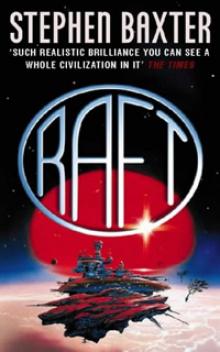 Raft xs-1
Raft xs-1 Bronze Summer n-2
Bronze Summer n-2 Transcendent
Transcendent Stone Spring
Stone Spring Coalescent
Coalescent The Medusa Chronicles
The Medusa Chronicles Origin m-3
Origin m-3 Silverhair tm-1
Silverhair tm-1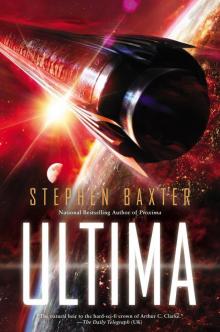 Ultima
Ultima Voyage n-1
Voyage n-1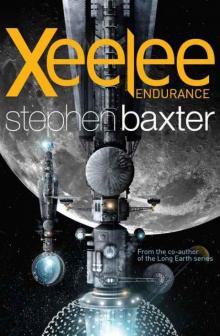 Xeelee: Endurance
Xeelee: Endurance Space m-2
Space m-2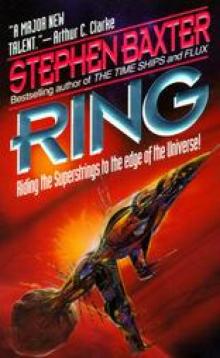 Ring xs-4
Ring xs-4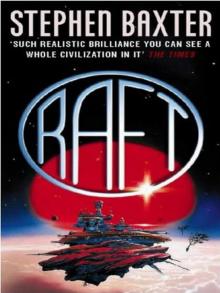 Raft
Raft Xeelee: Vengeance
Xeelee: Vengeance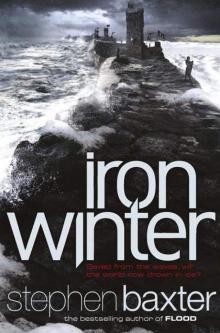 Iron Winter n-3
Iron Winter n-3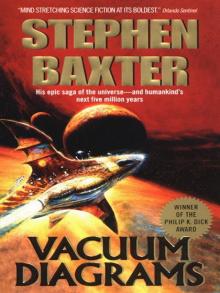 Vacuum Diagrams
Vacuum Diagrams Longtusk tm-2
Longtusk tm-2 Proxima
Proxima Evolution
Evolution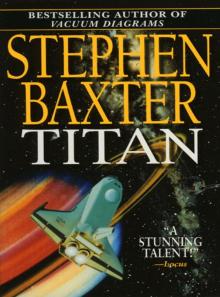 Titan
Titan Last and First Contacts (Imaginings)
Last and First Contacts (Imaginings) Emperor
Emperor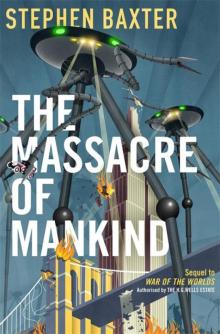 The Massacre of Mankind
The Massacre of Mankind Starfall
Starfall Doctor Who - The Wheel of Ice
Doctor Who - The Wheel of Ice Longtusk
Longtusk Silverhair
Silverhair Conqueror tt-2
Conqueror tt-2 Flood
Flood Flood f-1
Flood f-1 Emperor tt-1
Emperor tt-1 Moonseed
Moonseed Conqueror
Conqueror Timelike Infinity xs-2
Timelike Infinity xs-2 The Ghost Pit
The Ghost Pit Xeelee: An Omnibus: Raft, Timelike Infinity, Flux, Ring
Xeelee: An Omnibus: Raft, Timelike Infinity, Flux, Ring Weaver tt-4
Weaver tt-4 Landfall: Tales From the Flood/Ark Universe
Landfall: Tales From the Flood/Ark Universe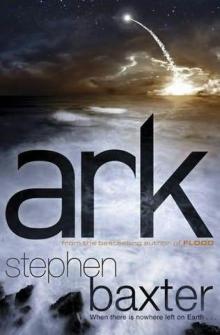 Ark
Ark Emperor: Time’s Tapestry Book One
Emperor: Time’s Tapestry Book One Space
Space Icebones
Icebones Manifold: Space
Manifold: Space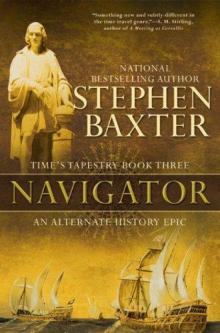 Navigator
Navigator Obelisk
Obelisk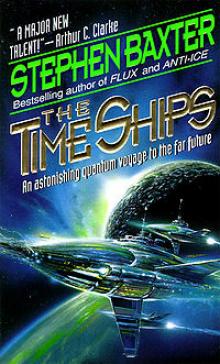 The Time Ships
The Time Ships Bronze Summer
Bronze Summer Resplendent
Resplendent Moonseed n-3
Moonseed n-3 Flux xs-3
Flux xs-3 Transcendent dc-3
Transcendent dc-3 Icebones tm-3
Icebones tm-3 Phase Space
Phase Space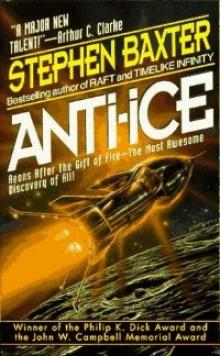 Anti-Ice
Anti-Ice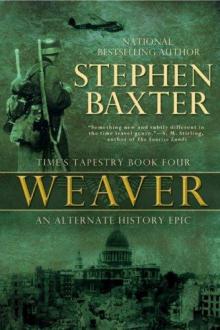 Weaver
Weaver Voyage
Voyage Time m-1
Time m-1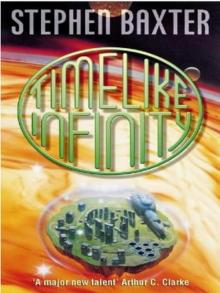 Timelike Infinity
Timelike Infinity Exultant dc-2
Exultant dc-2 Coalescent dc-1
Coalescent dc-1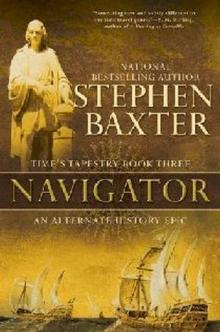 Navigator tt-3
Navigator tt-3